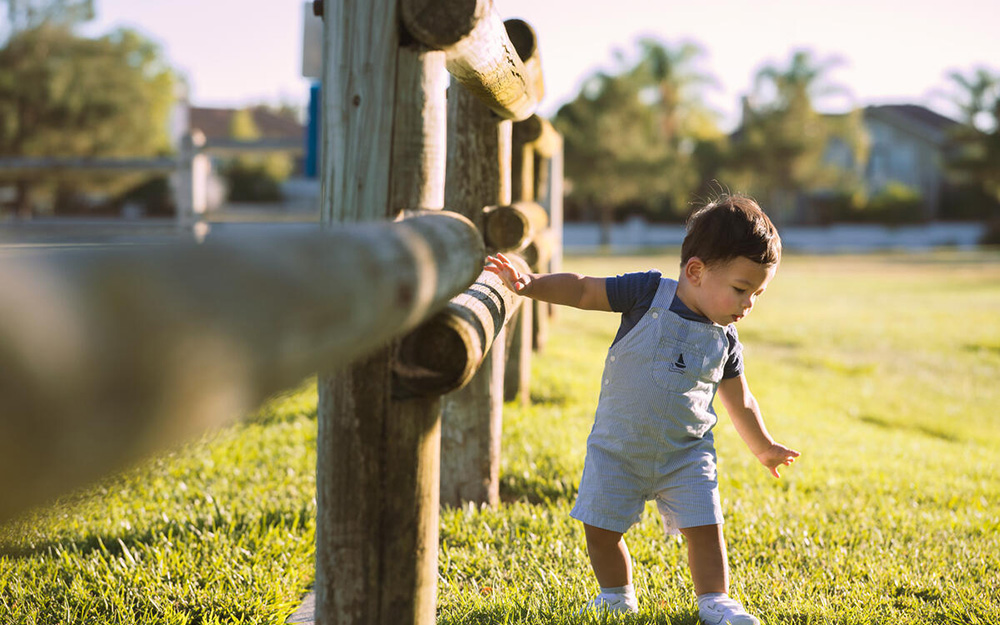Cedars-Sinai Blog
Timely Pediatric Asthma Treatment
Sep 04, 2024 Victoria Pelham

At a time in their lives that is pivotal for learning and growth, many children struggle to catch their breath. It’s because of asthma, the nation’s most common childhood condition, affecting nearly 4.7 million Americans younger than the age of 18.
In 44% of pediatric cases, asthma is uncontrolled, according to an estimate from the Asthma and Allergy Foundation of America. The constant threat keeps children awake and on guard around the clock, afraid for their next breath.
"Some kids get really used to feeling short of air,” said Irina Dralyuk, MD, a Cedars-Sinai Guerin Children’s pediatric pulmonologist. “They don’t know what it’s like to breathe normally."
Irina Dralyuk, MD
"Just because somebody was diagnosed at 7 doesn’t mean they’re going to be the same at 10 or even 8."
Cut Off From Everyday Life
Children with asthma, which can be life-threatening, react more strongly than other kids to breathing aggravations. Those include dust, bug, mice or grass allergies; exercise; infections; smoke and chemicals. In an asthma flare-up, a person’s airways get inflamed. That cramps the supporting muscles and churns out thick mucus, clogging the tree-like network of tubes in the lungs. Kids wheeze and cough. If an attack escalates, children might gasp for air, stutter or feel intense chest pain trying to inhale—or even lose the ability to talk and walk.
About one in six asthmatic children heads to emergency departments annually. One in 20 is hospitalized.
In fact, some youth are routinely in and out of hospitals and miss so many school days that they are set back academically. Dralyuk said asthma-related stress also often steals childhood fun.
If the condition goes unchecked, a child’s respiratory system can irreversibly scar and change shape in a way that limits their airflow.
"Then 20 to 30 years down the road, lungs look and function like you’ve been smoking for decades," Dralyuk explained.
Vigilant Care
Experts emphasize that children don’t have to lose years of their lives to asthma. Its most serious, lasting symptoms can be prevented through consistent care.
Parents should keep a close eye on their children’s symptoms and whether they are keeping up with prescribed medications.
"It’s important to not let it go," Dralyuk said. "You can’t just ignore asthma or assume it’s not a big deal. It could be worse than you think it is."
Pediatric treatment typically includes a tailored combination of:
- Anti-inflammatory medications to decrease swelling, including scheduled inhaled steroids
- Bronchodilators, which are drugs that relax muscles and dilate the respiratory tree (and can be delivered continuously, if needed)
- Allergy treatments, including antihistamines, steroids and decongestants, since allergies often complicate asthma
- Immunotherapy, a newer class of biologic drugs that block inflammatory cells that set off the response
Children often take their asthma medications via a nebulizer and mask, to ensure that the treatments reach the lungs.
Respond in Time

Experts recommend seeking out a pediatric pulmonologist trained in respiratory health to manage care and team up with parents to find the best strategies.
A doctor can also show parents how to deliver treatment to ensure it works correctly. Dralyuk strongly encourages appointments every three to four months.
"Asthma is very dynamic, so it changes over the course of somebody’s life," Dralyuk said. "Just because somebody was diagnosed at 7 doesn’t mean they’re going to be the same at 10 or even 8."
Your child’s pulmonologist can adjust treatment based on the severity of a child’s case, life changes, goals and triggers (such as seasonal allergies, wildfires or enrolling in soccer for the first time).
Any child who has more than one critical asthma attack a year is considered to have a severe case. Control is a crucial marker for everyone—defined by the amount and frequency of symptoms, nightly rescue treatments and lung capacity—essentially, its toll on quality of life.
Cedars-Sinai Guerin Children’s recently launched a special clinic, conducted the first Wednesday of every month, in which pulmonologists and allergists investigate complex cases.
Leaders aim to get to the bottom of challenges and figure out which resources or new drugs can shield kids from traumatic hospital stays. The causes could stem from another respiratory illness, such as sleep apnea, or the environment.
In the Air
Families can protect their child at home, too.
Dralyuk suggested keeping the air as clean as possible, free of dust, incense and cigarette smoke. If you smoke, change your clothing when you come inside, wash your hands and face and brush your teeth. She also advises using air purifiers and air conditioning filter changes to get rid of circulating irritants, as well as frequently washing curtains, carpets, rugs, fans and stuffed animals.
Be careful to use gentle, hypoallergenic cleaning products.
For children themselves, she said the best advice is to get moving, once they are able.
"With the right care, children can run and play, scuba dive, go on a plane or climb a mountain," Dralyuk said. "Whatever they want to do, I want them to do it."



